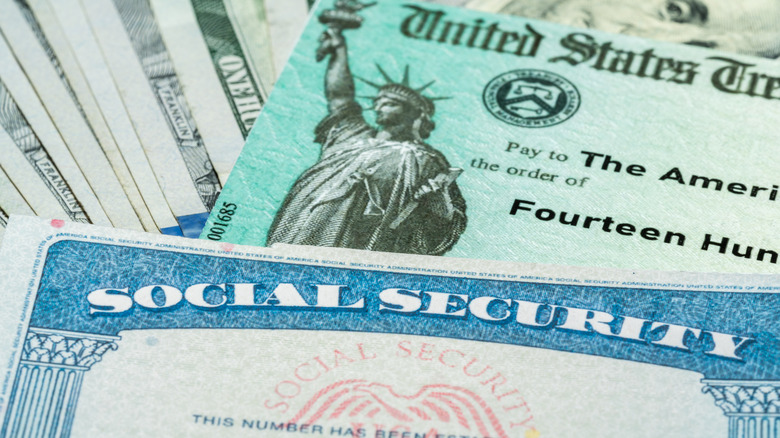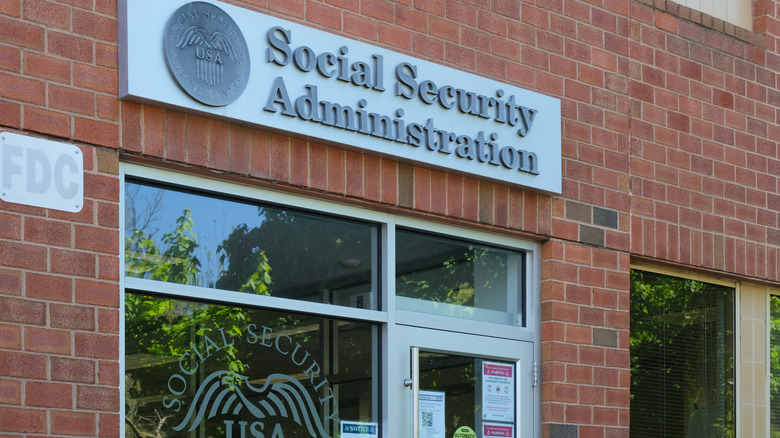Your Social Security Benefits Will Stop Starting In April If You Don't Meet This Requirement
There's no question that America's Social Security system is undergoing sea change under the second iteration of the Trump administration. In particular, the Department of Government Efficiency (DOGE) — headed by billionaire entrepreneur Elon Musk — has focused its sights on reducing fraud and financial waste within the Social Security Administration (SSA). Some of DOGE's directives have met controversy and even lead to the resignation of the SSA's acting director. Still, there's no denying that the retirement benefits program is underfunded and financially stressed to the point that personal finance guru Dave Ramsey labeled Social Security's future "unpredictable."
As it stands, some Social Security recipients already risk losing their benefits due to failure to properly update personal information like income and home addresses. But recently, the SSA unveiled a new requirement that requires millions of new and existing recipients to show up in-person at a Social Security field office to verify their identity. Beneficiaries who are required to complete the in-person identity check and fail to do so could have their accounts labeled fraudulent or no longer active. That translates into the scary prospect of benefits getting suspended or even lost altogether.
Not all recipients will be verified in-person
The thought of all 69 million retirees who are collecting Social Security being required to present themselves at their nearest Social Security office within the next week or two is a daunting and seemingly impossible task. That's especially true since part of DOGE's cost cutting measures includes closing a number of Social Security field offices nationwide, which will make in-person access more difficult for recipients living near a closed location.
Fortunately, not every Social Security recipient will need to be verified in-person. There's not an exact number or percentage reflecting the amount of retirees who will be affected, but the group is limited to folks who aren't able to be verified online via the agency's "my Social Security" account portal.
Previously, a telephone verification process was available to vet recipients' identities. However, while convenient, the phone verification offered a larger opportunity for fraud to occur. With the demise of the phone system, beneficiaries will be verified online and if that avenue fails, in-person.
It's a controversial, but necessary policy
While curbing fraudulent payments is undoubtably a worthwhile goal, some critics of the in-person verification process mention that the transition period is simply too short. In comments to KOAT, an Albuquerque, New Mexico news outlet, AARP spokesman Bill Sweeney says, "We're absolutely committed to rooting out any fraud that may be in the system, but asking people on less than two weeks notice to do some new system, and download some apps on their smartphone that many seniors don't even have, or to drive long distances to field offices, is a real problem."
That sentiment is echoed by Nancy LeaMond, another AARP executive, who mentions to the Associated Press that "any delay in Social Security caused by this change can mean real economic hardship." Further complicating the directive to show up in-person, more than 7,000 Social Security employees have been laid off and 47 SSA field offices are closing, with 26 of those slated to close this year.
In defense of the new policy, which begins March 31, SSA acting director Leland Dudek cites approximately $100 million lost to direct-deposit-related fraud each year. And the government agency isn't the only victim of such fraud, either. Social Security recipients themselves saw $33.5 million in benefits redirected to fraudsters via unauthorized changes in direct deposit preferences over a five year period ending May 2018.


